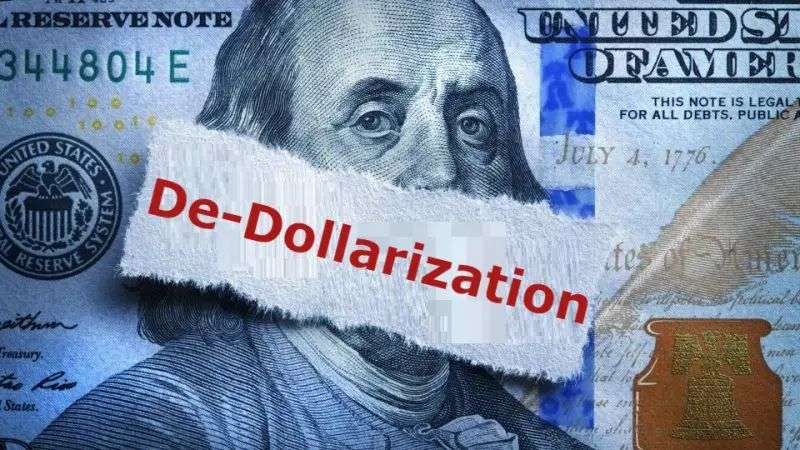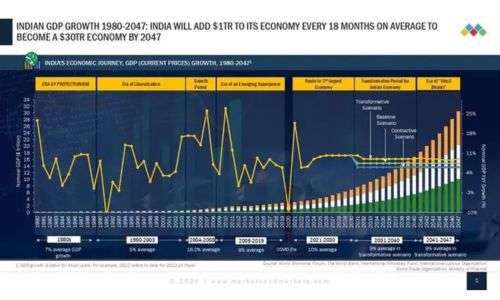An exploratory analysis of the ongoing scenario of global trade and tariff orders by the United States of America against the world nations. Since the new administration took office under President Trump, the world has been experiencing an uncertain economy. The United States is one of the market bulls known for its potential, forex exchange rate, and world trade functions around the dollar. At the same time, there is concern for the US about the de-dollarisation initiatives by its other partners.
To counter such measures, the US government’s sudden action makes the global economy sink. We have experienced severe distress in the global stock market soon after the announcement of “Reciprocal Tariffs” by the Trump administration in the month of April. The initial tariff was set at a baseline of 10% for nearly all trading partners, with higher rates, up to 50%, for 57 countries scheduled to take effect on April 9. However, due to the negative market reactions, Trump paused the implementation of these higher, country-specific tariffs for 90 days, replacing them with a 10% baseline tariff on most goods. The deadline for this pause was later extended to August 1, 2025.
The long-awaited strategy has been utilised as an economic weapon by President Trump against world nations. Trump demands that each nation be in favour of America; if any of the states deny doing so, he will impose severe tariffs on that country. Doesn’t it sound like a dictatorship? Being the president of the world’s oldest democratic country, Trump acts as an authoritarian, which not only negatively impacts other nations but also causes internal damage. Link
For instance, on July 31, 2025, the U.S. announced a 25% reciprocal tariff on imports from India, effective August 7. On August 6, citing India’s continued Russian oil purchases, President Trump ordered an additional 25% tariff, raising the total to 50% on many Indian goods from August 27, 2025.
By branding MAGA-Make America Great Again, Trump indirectly threatened the electronics manufacturing industry’s leading firms, such as Apple, Inc., and others, because they were building production units in India. This suppressed the American leading tech companies’ external investment. The game started with this initiation of Trump against the global economy.
Rationale for this sudden target on India:
- The US requires a transparent purchase value of Russian oil from India.
- India’s impressive economic growth in recent years, and which is far progressive than America’s economy. According to the RBI India GDP project could be 6.5%, however this economic barrier made by the US could impact the growth by 0.40-0.50% in the FY 2025.
- India became self-reliant in its defence manufacturing, and reduced a significant amount of defence imports from the US.
- India’s superiority over Trump in the Opt, Sindoor.
- Most importantly BRICS cooperation.
What could India do to counter such barriers:
Do we have any alternative?
Definitely, Yes. At this time the Trade Free Agreement between India and the UK could serve as an alternative trade opportunity for exporters. It is considered to be a strategic geo-political economic option.
Not only that, there are a few economic counter actions India could take, such as:
- Freezing defence deals with the US could impact their economic ambition.
- The US’s 40% generic drugs are exported by India, if any shortage could take part in it America and its people sink in sickness most of the medicines are life saving potential.
- India already aimed to reduce the import of Crude oil and rough diamond from the US. Both worth $45 million.
- India’s trade balance with BRICS will improve, there is a high possibility to build strategic partnerships with Russia and China as well.
- QUAD: Alliance could crumble in this relevance, which reverses the US presence in IOR.
- Note: India could leverage IT soon, which overcomes the US. Open AI founder Sam Altmam, stated that India could outperform the US in the AI advancements.
Why is the US being unfair now?
The U.S. government currently faces financial challenges and is operating with a budget deficit, meaning spending exceeds revenue. This deficit adds to the national debt, which as of June 2025 stands at over $36.2 trillion.
To make over this Trump administration targeting world nations.
Trump has attempted to influence the US monetary policy but the FED Chairman totally neglected Trump’s request. On the other hand Trump strategically attempted to replace the current chairman.
Did the US impose tariffs on its trade partners?
Absolutely, Yes. Singapore faces a trade deficit because they import a lot from the US but in return Trump imposed a 10% tariff that triggered Singapore PM Lawrence.
There is not end for this:
The current trajectory of U.S. trade policy under President Trump reflects a shift from cooperative globalization toward an aggressive, protectionist agenda. By leveraging tariffs as an economic weapon, the administration has not only disrupted established trade flows but also strained diplomatic relations with key partners. The imposition of reciprocal and punitive tariffs—particularly on nations like India—signals a broader strategic intent to consolidate U.S. economic dominance while countering perceived threats from emerging economies and alternative alliances such as BRICS.
While such measures may provide short-term political gains and appeal to domestic protectionist sentiment, they carry long-term risks: market volatility, weakened trust in U.S. trade commitments, and the erosion of global economic stability. For targeted nations, diversification of trade partnerships, the pursuit of free trade agreements, and strategic economic countermeasures will be crucial in mitigating these impacts.
Ultimately, the unfolding tariff landscape underscores that global trade in the Trump era is not merely an economic contest, but a geopolitical chess game—where economic leverage is wielded as a tool of influence, and where resilience will depend on adaptability, alliances, and strategic foresight.
If you want, I can also refine this into a sharper, policy-brief style conclusion that blends academic tone with actionable recommendations. That would make it more fitting for research dissemination.


